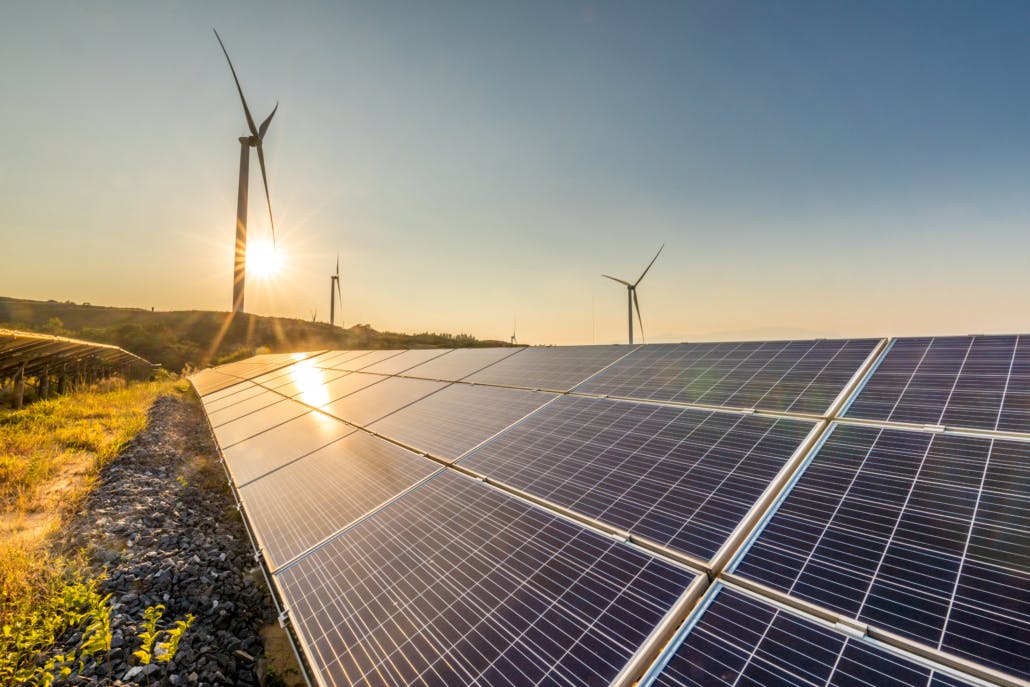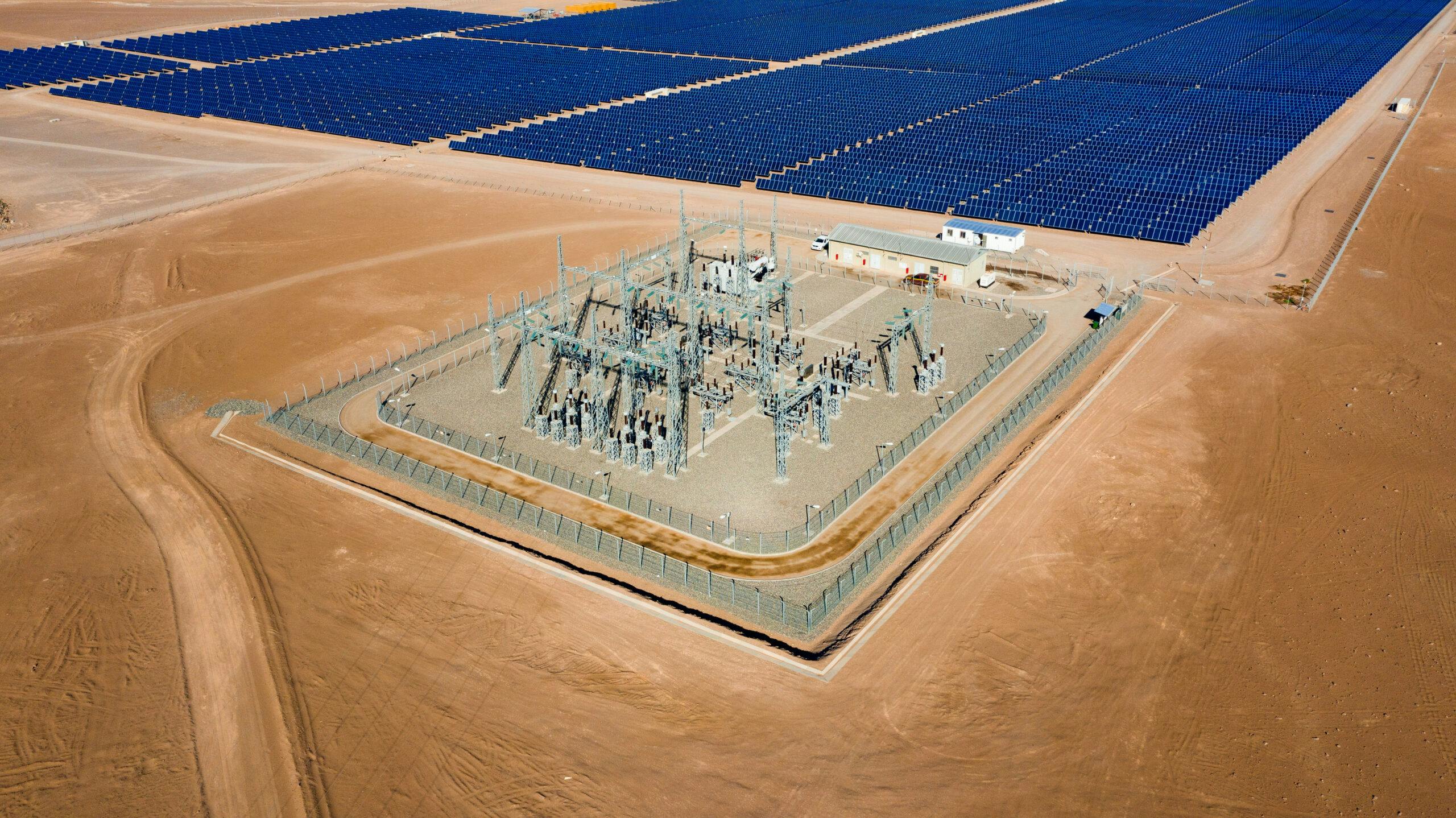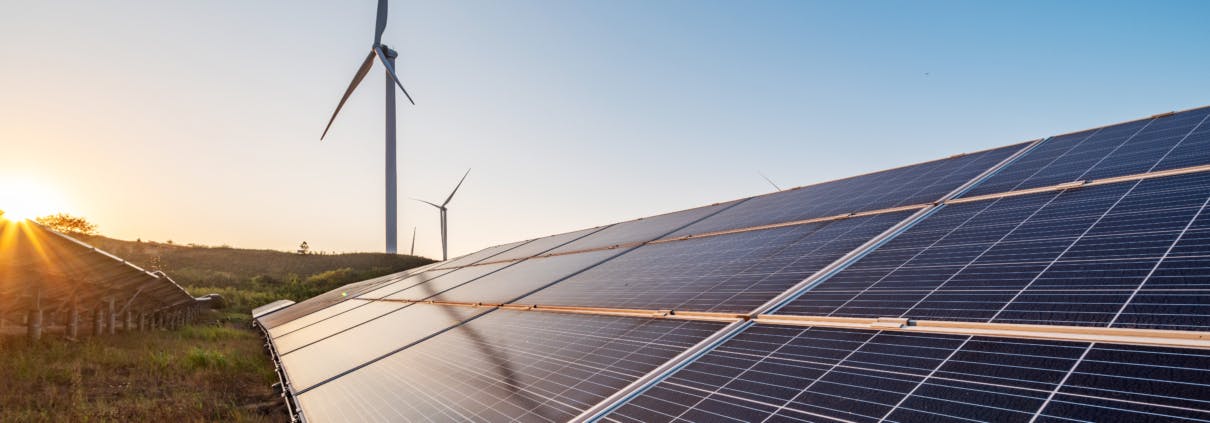Renewable energy: Making the circular economy happen in the chemicals industry

The chemicals industry is a vital sector of the global economy, with products used in a wide range of applications, including agriculture, construction, healthcare, transportation, and electronics. However, it is also one of the most resource-intensive, generating a significant environmental impact. As major chemical companies seek to adopt more sustainable and circular business models, we look at how renewable energy can help the industry reduce its dependence on finite resources, minimize waste and pollution, and contribute to a more sustainable future.
A vital economic sector with a large environmental footprint
The chemicals industry is an important sector of the global economy, with products used in a wide range of applications, from agriculture to healthcare, construction, transportation, and electronics. According to the International Council of Chemical Associations (ICCA), it contributes an estimated US$5.7tn, or 7%, to the world gross domestic product (GDP) through direct, indirect, and induced impacts, supporting 120 million jobs worldwide.
It also drives innovation and technological progress through heavy investment in research and development, driving the development of advanced technologies, such as automation and artificial intelligence.
However, because the production of chemicals requires the extraction of raw materials, the use of energy and water, and the release of emissions and waste, the industry is also one of the most resource-intensive and polluting, with a significant impact on the environment and human health.
According to the International Energy Agency (IEA), the chemicals industry is the largest industrial energy consumer and the third largest industry subsector in terms of direct CO2 emissions. At the same time, the Ellen MacArthur Foundation estimates that by 2050, the plastics sub-sector alone will account for 20% of global oil consumption and 15% of global greenhouse gas emissions.
The circular economy rises up the global agenda
Resource constraints and rising concerns about sustainability are changing how consumers think about chemicals. As brands around the world refocus their offerings towards eco-friendly products, the chemical industry is being called upon to address its environmental footprint and help to come up with cleaner, reusable, recyclable, or compostable inputs.
To reduce the impact on the planet of chemical production and consumption while also creating economic opportunities, the concept of a circular economy has become increasingly relevant in recent years.
The circular economy is an economic system in which resources are used and reused in a closed loop, with waste and pollution minimized, and materials and products are kept in use for as long as possible.
By adopting circular business models, the chemical industry can reduce its dependence on virgin materials and energy and create value from waste streams. Chemicals can be used and reused in various applications, and the environmental impact of chemical production and consumption can be minimized.
The chemicals industry has already taken some steps towards the circular economy model. For example, some companies have implemented closed-loop systems, in which waste from one production process becomes the raw material for another process. Others have developed products with a longer lifespan that can be easily recycled at the end of their life. Additionally, many companies have implemented eco-design principles, which aim to reduce the environmental impact of products by considering the entire life cycle of the product.
The future is circular
With the emergence of numerous new regulations and initiatives, the drive towards a circular economy is picking up speed, bringing with it more pressure for chemical companies to rethink their production processes.
In the United States, the Biden administration has introduced several policies aimed at promoting sustainability and combating climate change. One of the key policies is the Build Back Better plan, which includes measures to invest in clean energy, reduce greenhouse gas emissions, and promote sustainable infrastructure. Meanwhile, the recent Inflation Reduction Act provides regulatory incentives and market opportunities for sustainable and circular products and services, encouraging companies to design processes and products to deliver the same or better services for people with recycling and reuse in mind.
In the European Union (EU), the EU Taxonomy, which sets out a classification system for environmentally sustainable economic activities, includes criteria for the circular economy, such as the use of secondary raw materials and the reduction of waste. In addition, as part of the European Green Deal – a set of policies and initiatives launched by the European Commission in 2019 with the aim of making the EU climate-neutral by 2050 – the Circular Economy Action Plan sets out measures to promote a more circular economy in the EU. The plan includes measures such as eco-design requirements, extended producer responsibility, and the promotion of sustainable products and services.
Beyond government-led incentives, the investor community is also increasingly targeting funds towards the circular economy model, with Larry Fink, CEO and chairman of BlackRock, calling the concept “a foundational blueprint.”
Investor engagement is only likely to increase amid the continued emergence of sustainable finance frameworks such as the Principles for Responsible Investment (PRI), which calls on investors to incorporate the transition to a circular economy into their investment and ownership decisions.
Renewable energy for a truly circular economy
Renewable energy is an essential component of the circular economy concept because it addresses one of the main challenges of the linear economy: the reliance on finite and polluting resources, such as fossil fuels. The use of renewable energy sources, such as solar power, reduces the dependence on non-renewable resources and mitigates the environmental impact of energy production. This shift in energy production aligns with the circular economy’s goals, as it promotes the use of resources in a regenerative and sustainable way.
Renewable energy also plays a crucial role in the circular economy by facilitating the adoption of circular business models. For example, renewable energy can be used to power the production of recycled materials, which are a critical component of circular production systems. Additionally, renewable energy can support the reuse of products by providing energy for remanufacturing and refurbishing. By using renewable energy sources, the circular economy can create a system that is more self-sufficient, reducing the need for virgin materials and non-renewable energy sources.
Cognizant of this, several companies in the chemicals industry have already made significant strides in incorporating renewable energy into their operations.
For example, Dow, which aims to obtain 750 MW of its power demand from renewable sources by 2025, has increased the proportion of its total renewable electricity consumption from approximately 13% in 2019 to more than 25% today.
Covestro, a producer of high-performance plastics, has committed to becoming fully circular and is striving to become climate neutral by 2035 by converting its production sites to use renewable energy.
Similarly, DSM, a global science-based company in nutrition, health, and sustainable living, has set a target to source 75% of its electricity from renewable sources by 2030.
Other companies in the chemicals industry that have made significant progress in incorporating renewable energy into their operations include DuPont and BASF, among others.
The way ahead
While the chemical industry has made progress toward implementing circular economy principles, there is still much room for improvement. One potential solution to reducing the industry’s environmental impact is through a shift towards renewable energy, which is already being adopted by leading companies in the industry.
Renewable energy enables the adoption of circular business models, reduces the environmental impact of energy production, and enables the decoupling of economic growth from resource consumption. At Atlas Renewable Energy, we believe that the adoption of renewable energy sources is essential to create a circular economy that is truly regenerative and sustainable. We work with companies in the chemicals industry to uncover new opportunities to reduce their environmental impact, helping to create a more sustainable future for the industry.
In partnership with Castleberry Media, we are committed to taking care of our planet, therefore, this content is responsible with the environment.
Share This Entry


